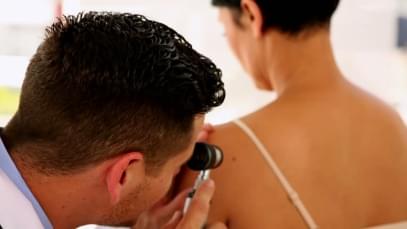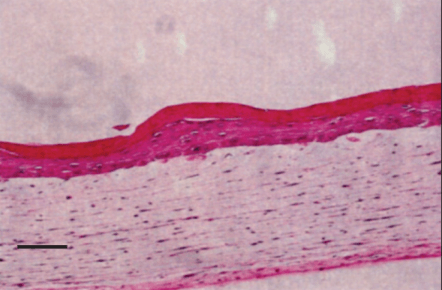- You are here: Home
- Applications
- Skin
Applications
-
Cell Services
- Cell Line Authentication
- Cell Surface Marker Validation Service
-
Cell Line Testing and Assays
- Toxicology Assay
- Drug-Resistant Cell Models
- Cell Viability Assays
- Cell Proliferation Assays
- Cell Migration Assays
- Soft Agar Colony Formation Assay Service
- SRB Assay
- Cell Apoptosis Assays
- Cell Cycle Assays
- Cell Angiogenesis Assays
- DNA/RNA Extraction
- Custom Cell & Tissue Lysate Service
- Cellular Phosphorylation Assays
- Stability Testing
- Sterility Testing
- Endotoxin Detection and Removal
- Phagocytosis Assays
- Cell-Based Screening and Profiling Services
- 3D-Based Services
- Custom Cell Services
- Cell-based LNP Evaluation
-
Stem Cell Research
- iPSC Generation
- iPSC Characterization
-
iPSC Differentiation
- Neural Stem Cells Differentiation Service from iPSC
- Astrocyte Differentiation Service from iPSC
- Retinal Pigment Epithelium (RPE) Differentiation Service from iPSC
- Cardiomyocyte Differentiation Service from iPSC
- T Cell, NK Cell Differentiation Service from iPSC
- Hepatocyte Differentiation Service from iPSC
- Beta Cell Differentiation Service from iPSC
- Brain Organoid Differentiation Service from iPSC
- Cardiac Organoid Differentiation Service from iPSC
- Kidney Organoid Differentiation Service from iPSC
- GABAnergic Neuron Differentiation Service from iPSC
- Undifferentiated iPSC Detection
- iPSC Gene Editing
- iPSC Expanding Service
- MSC Services
- Stem Cell Assay Development and Screening
- Cell Immortalization
-
ISH/FISH Services
- In Situ Hybridization (ISH) & RNAscope Service
- Fluorescent In Situ Hybridization
- FISH Probe Design, Synthesis and Testing Service
-
FISH Applications
- Multicolor FISH (M-FISH) Analysis
- Chromosome Analysis of ES and iPS Cells
- RNA FISH in Plant Service
- Mouse Model and PDX Analysis (FISH)
- Cell Transplantation Analysis (FISH)
- In Situ Detection of CAR-T Cells & Oncolytic Viruses
- CAR-T/CAR-NK Target Assessment Service (ISH)
- ImmunoFISH Analysis (FISH+IHC)
- Splice Variant Analysis (FISH)
- Telomere Length Analysis (Q-FISH)
- Telomere Length Analysis (qPCR assay)
- FISH Analysis of Microorganisms
- Neoplasms FISH Analysis
- CARD-FISH for Environmental Microorganisms (FISH)
- FISH Quality Control Services
- QuantiGene Plex Assay
- Circulating Tumor Cell (CTC) FISH
- mtRNA Analysis (FISH)
- In Situ Detection of Chemokines/Cytokines
- In Situ Detection of Virus
- Transgene Mapping (FISH)
- Transgene Mapping (Locus Amplification & Sequencing)
- Stable Cell Line Genetic Stability Testing
- Genetic Stability Testing (Locus Amplification & Sequencing + ddPCR)
- Clonality Analysis Service (FISH)
- Karyotyping (G-banded) Service
- Animal Chromosome Analysis (G-banded) Service
- I-FISH Service
- AAV Biodistribution Analysis (RNA ISH)
- Molecular Karyotyping (aCGH)
- Droplet Digital PCR (ddPCR) Service
- Digital ISH Image Quantification and Statistical Analysis
- SCE (Sister Chromatid Exchange) Analysis
- Biosample Services
- Histology Services
- Exosome Research Services
- In Vitro DMPK Services
-
In Vivo DMPK Services
- Pharmacokinetic and Toxicokinetic
- PK/PD Biomarker Analysis
- Bioavailability and Bioequivalence
- Bioanalytical Package
- Metabolite Profiling and Identification
- In Vivo Toxicity Study
- Mass Balance, Excretion and Expired Air Collection
- Administration Routes and Biofluid Sampling
- Quantitative Tissue Distribution
- Target Tissue Exposure
- In Vivo Blood-Brain-Barrier Assay
- Drug Toxicity Services
Skin

Skin is the largest and the most visible organ of the human body. The skin consists of two layers: the epidermis and the dermis, and beneath the dermis lies the hypodermis or subcutaneous fatty tissue. The primary function of the skin is to act as a barrier, and the skin regulates many aspects of physiology and contains an extensive network of nerve cells that detect and relay changes in the environment.
The function of skin makes itself a good route for delivering drugs. Pharmaceutical companies are seeking suitable ways to screen better drug formulations for many skin disorders and diseases such as skin irritation, skin corrosion, psoriasis, wound healing, percutaneous absorption and so on.
Cosmetic companies are also interested in skin testing in order to screen better formulations or evaluate the product safety as cosmetic products have become a very essential element in people’s daily life.
Traditional method failed to fulfill the demands of high-efficient evaluating of skin drugs and products in the early screening stage due to limited number of skin specimens and the strict ban of animal use in testing.
However, advances had been made towards the use of in vitro human skin equivalents/models for dermal drug and cosmetic product testing. Creative Bioarray provides in vitro dermatology drug test services and in vitro cosmetic test services by using in vitro human skin tissue models.
Dermatology

Creative Bioarray provides in vitro skin assays to help industries to develop better Dermatological formulations and products in preclinical stage. Learn more...
Cosmetics

Cosmetics are substances or products have become an essential element in our daily life. Creative Bioarray provides in vitro skin assays for serving personal care, and for helping industries to develop better cosmetic formulations and products. Learn more...
In vitro Skin Models

In vitro skin models are constructed from normal human keratinocytes cultured on an inert polycarbonate filter at the air-liquid interface, in a chemically defined medium. The Creative Bioarray skin tissue models are very similar to human skin in terms of morphology, of differentiation markers and of functional characteristics. Learn more...
Quote and Ordering
Our customer service representatives are available 24hr a day! We thank you for choosing Creative Bioarray services!
Explore Other Options
For research use only. Not for any other purpose.

